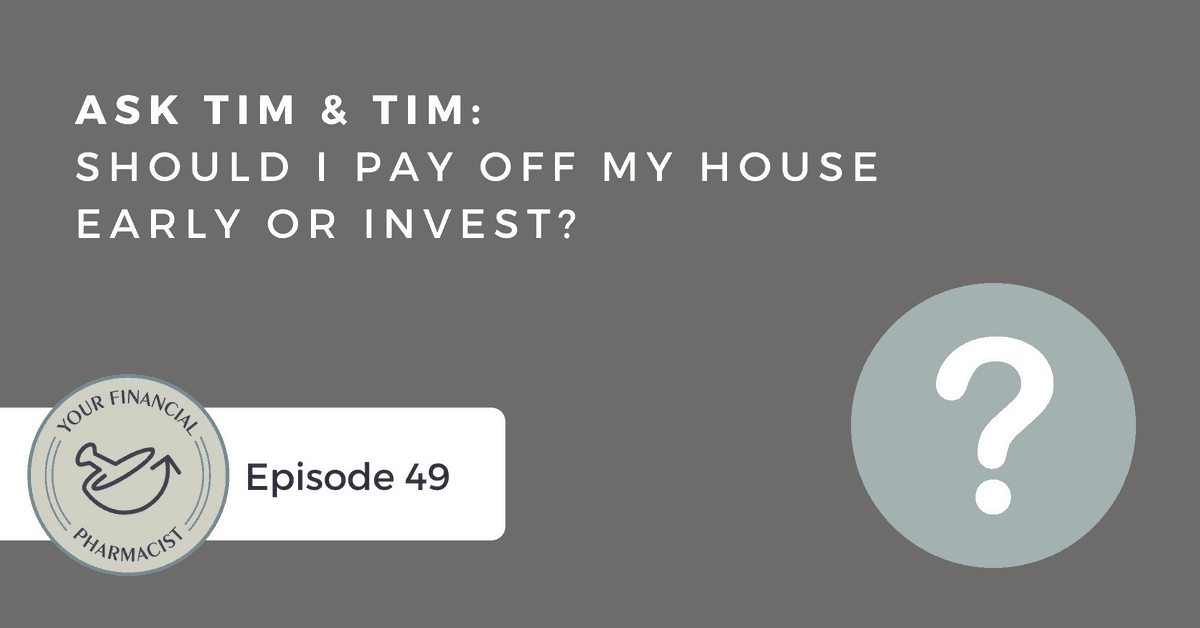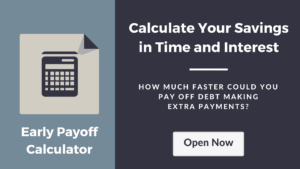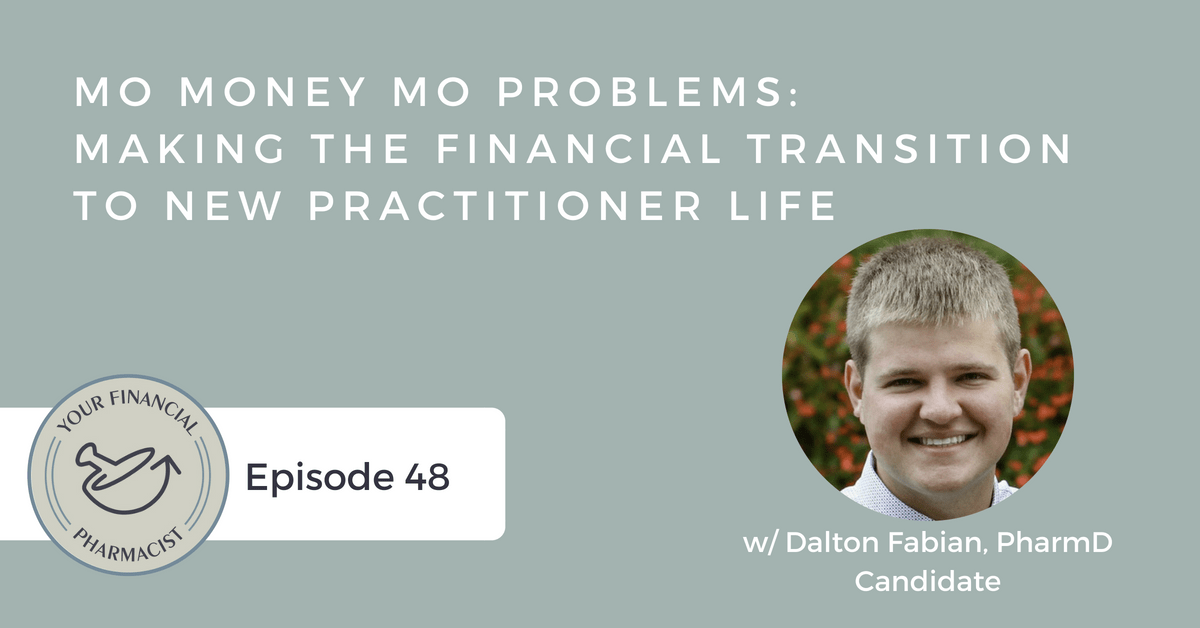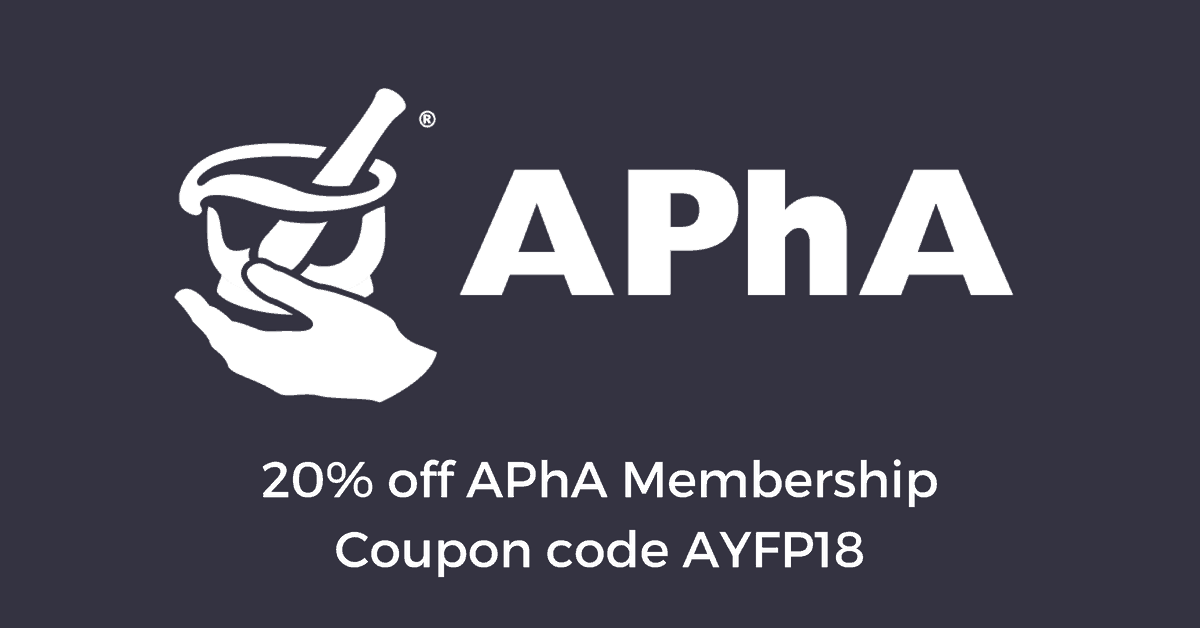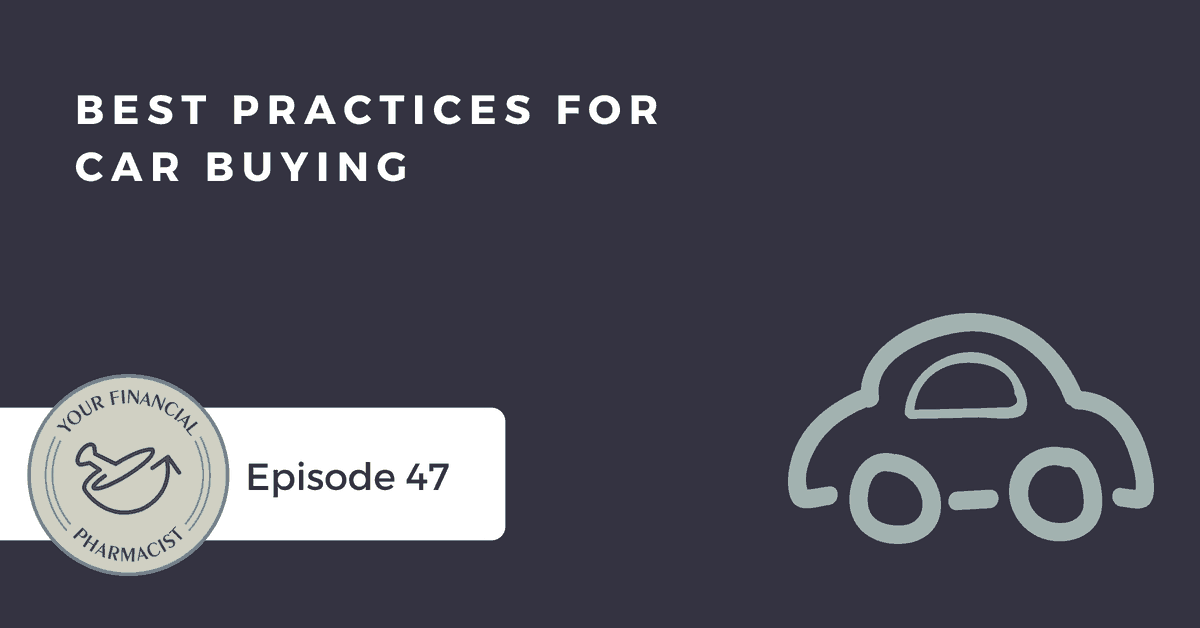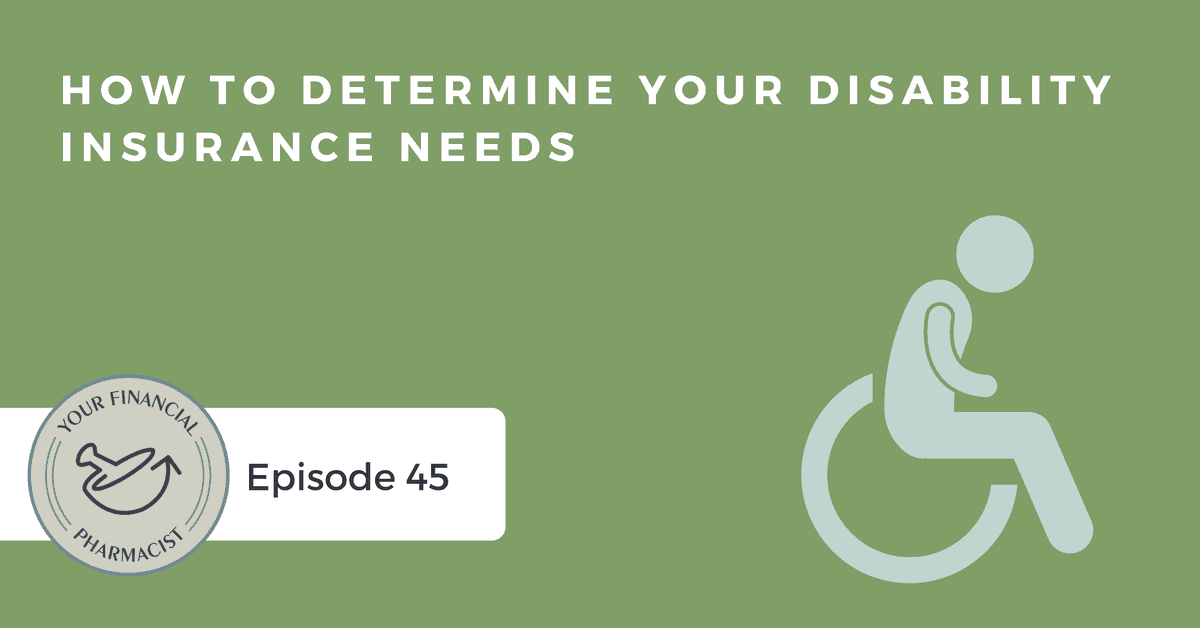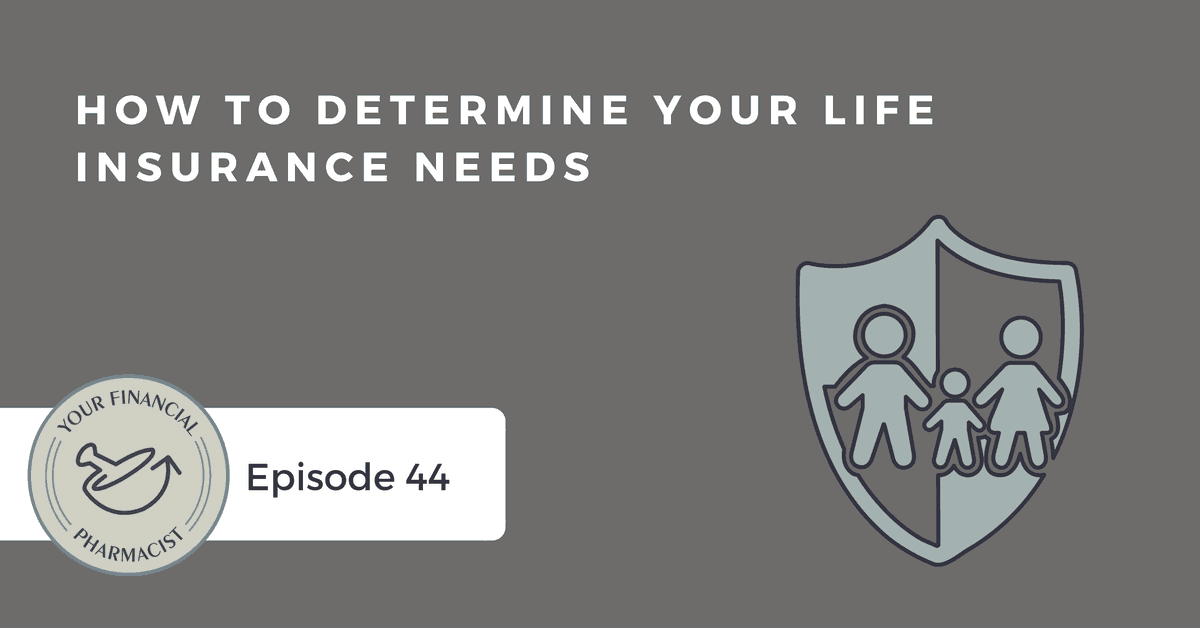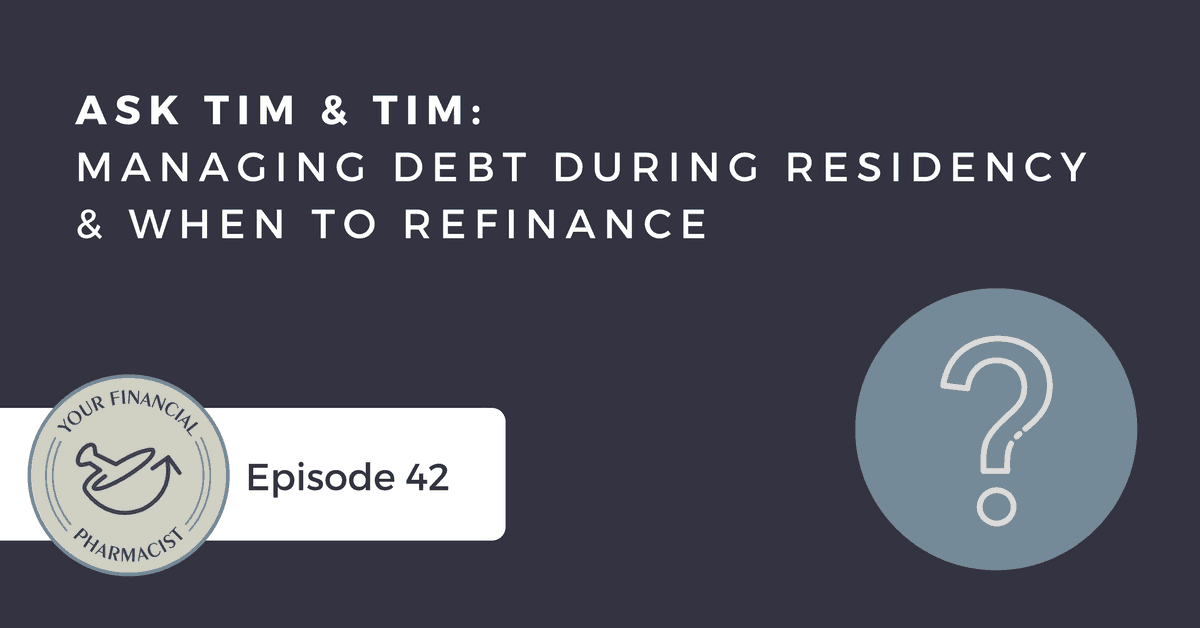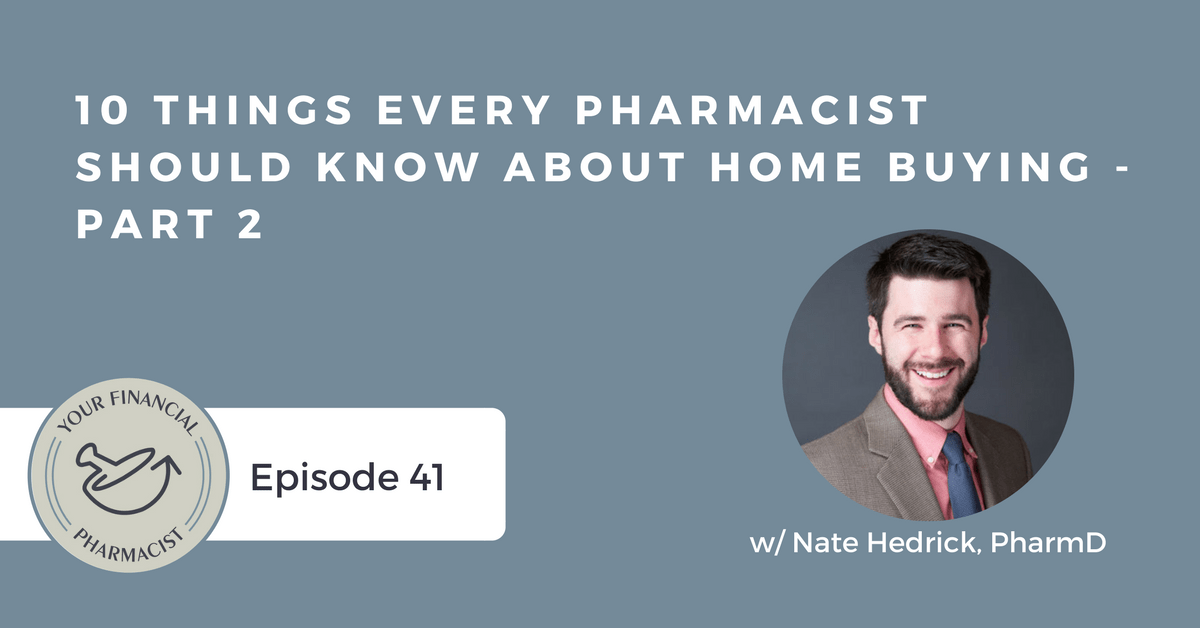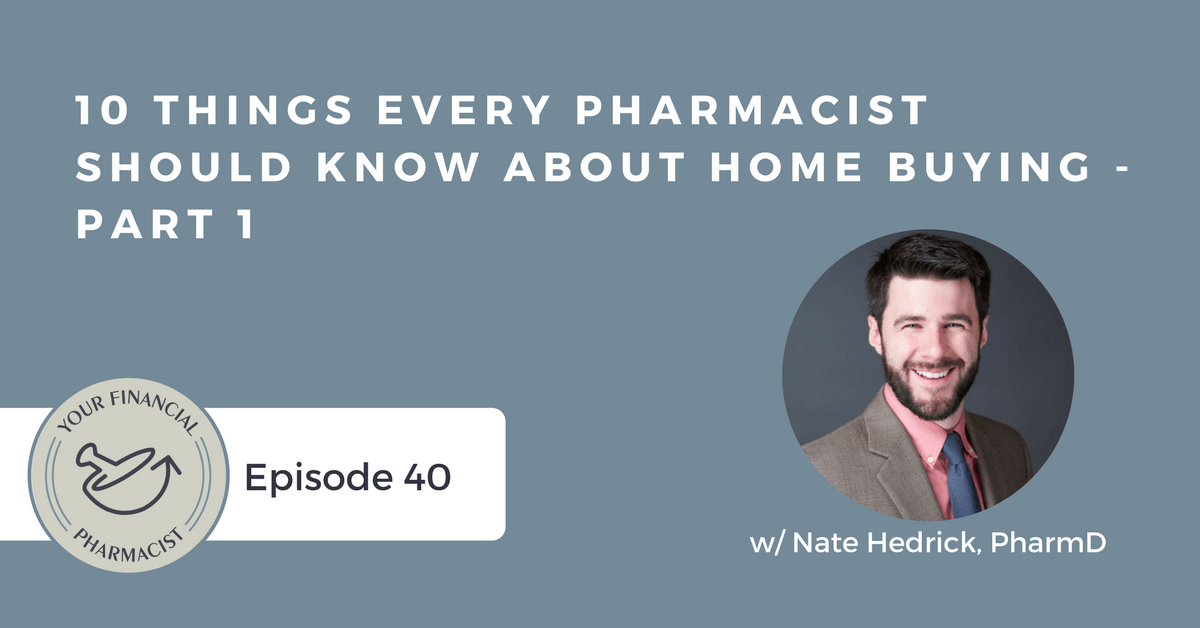On this Ask Tim & Tim episode of the Your Financial Pharmacist Podcast, we take a listener question from Michael in Columbus, OH that has stimulated lots of conversation and debate in the YFP Facebook Group…’should I pay off my house early or would I be better off refinancing, extending the term and investing the difference?’
If you have a question you would like to have featured on the show, shoot us an email at [email protected]
Mentioned on the Show
- YFP Episode 015 – West Point to CFP: Tim Baker’s Journey to Becoming a Fee-Only Financial Planner for Pharmacists
- YFP Episode 016 – 3 Reasons Why Pharmacists Should Consider Hiring a Financial Planner
- YFP Episode 017 – Essential Questions to Ask Before Hiring a Financial Planner
- YFP Episode 040 – 10 Things Every Pharmacist Should Know About Home Buying – Part 1
- YFP Episode 041 – 10 Things Every Pharmacist Should Know About Home Buying – Part 2
- The Millionaire Next Door by Thomas Stanley
- Simple Savings Calculator by Bankrate
- How a 1% Fee Could Cost Millennials $590,000 in Retirement Savings by Dayana Yochim and Jonathan Todd
Episode Transcript
Tim Ulbrich: Hey, what’s up everybody? Welcome to Episode 049 of the Your Financial Pharmacist podcast. Excited to be alongside Tim Baker as we tackle a great listener question about paying off a home early versus investing the difference for the future. Now, if you don’t own a home, and you’re thinking, you know what, this question doesn’t apply to me, before you hit stop on the play of this podcast, let me encourage you to stay with us. I think this question is really applicable to anybody that’s debating whether or not they should focus on debt repayment, whether that be student loans or in this case, a mortgage, versus investing in the future. So Tim Baker, hard to believe here we are, Episode 049, and that means we’re turning the corner next week on Episode 050 and somewhat of a spoiler alert — almost hitting 50,000 downloads of the podcast. Hard to believe, right?
Tim Baker: Yeah, we always joke, we’re not really sure if that is a good thing or like how we’re doing in the podcast world. But I think 50,000 downloads is a lot. So yeah, I’m excited. I think the podcast has been a great avenue for us to interact with our audiences, and I think it’s been successful so far.
Tim Ulbrich: Yeah, I would agree. And you know, I’m with you. I don’t know what that number means. I don’t know if 50,000, 100,000, 10,000, whatever. But as long as we hear from the listeners that hey, it’s good content that’s providing value and it’s helping, we’re going to keep doing it.
Tim Baker: Definitely.
Tim Ulbrich: And I think we’re having fun doing it. So how often do you get something like this question about the pros and cons of paying down debt, whether it’s student loans or in this case, a mortgage, versus investing? It seems like it comes up all the time, right?
Tim Baker: Yeah, and I definitely get it more in YFP circles than with Script Financial clients. I think ultimately, with a lot of clients I’m working with, it’s still kind of definitely foundational. But it does come up. It’s the same situation with student loans. Do I pay off the student loans? Or do I invest the difference? Like what do I do there? And it’s a tough — you know, you can do the math, which we’re going to go through the example today, but I would say that for this, there’s really no real right answer. I think for this one, there probably is. But it can be definitely shades of gray in terms of which way you go. And I think you know, for this particular question, you got to make sure you have all the information and the advice, like where’s it coming from, that type of thing. But yeah, I mean, it’s a tough one to kind of navigate.
Tim Ulbrich: Absolutely. So let’s jump in and hear the question from Michael in Columbus, Ohio.
Michael: Hey, Tim and Tim. This is Michael from Columbus, Ohio. I have a question about the benefit of paying off a home mortgage. I met with my adviser last week, and he mentioned it would be more beneficial to refinance to a 30-year loan, although I only have five years left on my current one. His rationale was that the banks are giving you the money for next to nothing. And investing the difference in the mortgage payment over 30 years would far exceed the amount of interest that would be paid on a loan. This is completely opposite from everything I know about eliminating debt. What are your thoughts?
Tim Ulbrich: So thank you to Michael for submitting your question on this Ask Tim & Tim episode, we appreciate it. And just a quick shoutout to Michael, he actually was one of my good friends and classmates at Ohio Northern University Class of 2008 — go Polar Bears — so excited you’re a part of the YFP community, really appreciate you taking the time to submit this question because I think it’s probably something that many others are thinking about, and I know something that Jess and I are talking about regularly in terms of whether or not we should pay off the home earlier or whether we should be focusing on other financial goals. So before we jump in and dissect this question, let me first point you to episodes 040 and 041 where we talked about 10 things every pharmacist should know about home buying because in this episode, we’re not going to focus so much on the logistics of home buying itself but rather how to balance the repayment of a mortgage versus other financial goals such as investing. So if you’re listening, and you have other questions about home buying, make sure to check out episodes 040 and 041 where we talk in detail with the Real Estate RPH Dr. Nate Hedrick about home buying. OK, so a couple things I want to recap about Michael’s question, and actually, I want to add in some additional details that he provided on the Facebook page, on the YFP Facebook page, in the Facebook group that is going to help us and be important as we talk about the context of this question. So obviously we know and we heard from Michael, he’s got five years on his current mortgage, which is awesome to begin with, approximately $90,000 left to pay back. And that interest rate, the current interest on his home mortgage is 3.49%. So the suggestion that he got from a financial advisor was to refinance to a 30-year loan, so instead of paying it off in five years, refinance a 30-year loan, which would bring down the monthly payment from approximately $1,500 per month, what he’s paying now, to $500 per month and then invest the difference, which of course would be $1,000 per month that he could then free up and invest. Now, one last piece of information that’s important. If you look at the current 30-year mortgage interest rates, it’s about 4.75%. So his current mortgage rate, 3.49%. He’s got five years left, $90,000 to pay back versus refinancing to a 30-year loan, which would bring up the rate to 4.75%. OK, so Tim, as we start to look at this, I think what would be helpful is if we could spend just a minute or two and break down the math, and let’s get out of the weeds on math, and let’s actually talk about all the other factors that we need to consider on top of the math. So when I look at this, I really am thinking about two different options here that Michael has or that he’s ultimately considering. Option A is to pay off the mortgage, $90,000, pay it off in five years at the current rate, 3.49%, and invest that current mortgage payment, which would be $1,500 a month. After he’s done paying it off in five years, take that entire amount and invest it, $1,500 per month going forward. Option B would be instead of paying it off in five years, would be to refinance to a 30-year mortgage, which would lower the payment from $1,500 down to $500 and investing the difference right away, $1,000 per month rather than waiting five years to invest the full amount. So talk us through the math on those two options, and then we’ll talk through some of the other variables to consider on top of that.
Tim Baker: Yeah, I actually think this is the best way to do it. Obviously, you’re going to have different things that could go on. I mean, he could move and you know, get another mortgage, and that obviously throws a wrench in it. But I think for the best apples-to-apples comparison, Option A, which would be stay the course, you know, pay it off over five years and then invest the $1,500 versus go with the advisor’s advice is probably the best way to measure it. So if we break down the math, for the stay the course Option A scenario, if he were to pay five years to the completion of his loan, he’s going to pay an additional $8,000 in interest paid. So what he actually saves over the course of that is $1.215 million. And basically, the net of that — so if we take out the interest paid, he’s going to net $1.207 million. If we compare that to the advice of his advisor, if he pushes out the loan from five years left and basically refinances it with a 30-year mortgage at 4.75, the interest that he’s going to pay over those 30 years is actually $79,000. So the savings that he gains on this is $1.219, so that is a net of $1.14. So if you compare those two, the net is $1.207 with Option A, and then $1.14 with Option B, which is the refinance.
Tim Ulbrich: Yeah, and I think that’s important. And for those listening, remember what we’re talking about here, the context of Michael’s situation. So five years left on a payoff. Now, the other assumption we made here was an annual rate of return on the investing side of 7%. So I’m going to ask Tim Baker about that in a minute and why we used that number. But remember here, we’re talking about a five-year repayment period. So if somebody’s listening, and you’ve got 20 or 25 years left on your mortgage, I think one of the lessons here to learn is do the math, run the numbers, and obviously, the greater the difference of these rates between your mortgage rate and what you might accrue investing and/or the time period that you have on the payback, obviously these numbers are going to shift and be different. But here what we actually see if we’re looking at this is what I think is the closest apples-to-apples comparison. Both resulting in him paying $1,500 a month over the next 30 years, whether that be Option A, stay the course, all of that going to the mortgage for five years and then all of that for the remaining 25 going toward investing versus Option B, which is the advisor advice, which would be refinancing on a 30-year and balancing that between mortgage and investing over the total 30 years. So I think for me, that’s the apples-to-apples where you as the individual are putting $1,500 a month. And what we see here is actually Option A, pay off the house, and then invest beyond that for the next 25 years, that math actually comes out in favor of that, although for your situation, those numbers may be off or differ slightly. Now, before we talk about the other variables to consider — because I think there’s lots of variables to consider, even if the math wasn’t favorable in terms of paying off the home, Tim Baker, talk us through the 7% because some people might be wondering, why are you using 7% when it comes to the assumed average rate of return on the investing side?
Tim Baker: Typically, when I do any type of calculations for you know, long-term investments, I typically use 7%. Now, with the market has shown over long periods of time — this is not, you know, buying in and out of different types of stocks, it’s basically buying the market and having it take care of you over long periods of time. It will typically return 10%, you know, as an annual rate of return, on average, and then 7% is basically what that is if you take out inflation. So 7 — I’ve seen some people use 7, 8% — that’s typically the best, kind of the — I wouldn’t say industry standard — but that’s typically what I see a lot of advisors use when they’re saying, OK, let’s do a nest egg calculation, how much do you use? And that’s typically what the market will return over long periods of time.
Tim Ulbrich: Yeah. I think that’s important context because obviously, when we look at a mortgage payment or student loan payment, that’s typically a fixed interest rate. You know exactly what you’re going to get if you pay it off early, which obviously when we look at the investing side, we’re making some assumptions. And here, we’re using that 7% number. So just to recap here on the math, for Michael’s situation if we’re comparing that Option A of pay off in five years and then take the whole mortgage payment and invest it over 25 years beyond that, versus Option B, the advisor advice being refinance to 30 years, invest some of it and then pay off the house over 30 years, here the math actually comes out in favor of paying off the home early. Now…
Tim Baker: Which we were surprised by that.
Tim Ulbrich: We were. And I think that to me, because as I look back at the discussion on the Facebook group, myself included, I jumped to conclusions right away. Now, people who know me, you know I’m going to air on the side of pay it off, but I think the assumption is whether you’re on the side of pay it off or whether you’re on the side of invest it, do the math, right? Do the math, and then after you do the math, start to ask yourself, what are the other variables beyond the math that you need to consider? So Tim Baker, when I think about debt repayment, whether it’s a home or student loans, versus investing, beyond the math, usually the No. 1 variable I’m looking at is what is somebody’s feelings toward the debt? And what peace of mind, if any, might they have about getting that off their shoulders? And so as you look at this situation here, even in the context of you working with clients, how do you typically talk somebody through that? And how does that factor in as a variable?
Tim Baker: Yeah, I mean, I think it comes down to — we talk about this a lot in the student loan course — it kind of comes down to like, well, how does this particular debt make you feel? Some people, they look at mortgage debt and they’re like, well, you know, it’s a use asset, I know it’s going to appreciate over the long term, so it’s OK. I don’t mind having that for 20, 30 years. Now, it might change, you know, if he’s been paying this for 25 years or 15 years or whatever the circumstances for this and then to push it out again, that might be a different factor. But I typically — and this is kind of where I think, you know, having a conversation, me asking questions and getting the heck out the way and saying, and you know, I don’t work with Michael, but you know, some of the questions I would ask him is how does he feel, how does he feel about the debt, the mortgage debt? And I know Tim, you have what he originally wrote on Facebook in terms of his feelings towards that. So can you read that off real quick?
Tim Ulbrich: Yeah, I think it’s a great post. It gives us some insight, I think, into how he’s feeling about it overall. So he says, and this was in response to what you had asked him about fees and whatnot involved, and he said, ‘We haven’t decided what to do yet. The idea of having no mortgage in five years or less sounds amazing. However, I know that the best opportunity to create wealth is now so the money has time to grow and compound.’
Tim Baker: So I guess like I would say that, and be like, yes that is true. And obviously in this situation, we saw that that wasn’t true. Now I guess if you use a little different assumption, maybe 8% or if the interest rates weren’t that different for the house, maybe that were true. But in this case, it’s not necessarily the best play. But you know, if I hear a client, say things like ‘amazing’ or ‘anxious’ on the other end of the spectrum, to me, that carries weight. And the math is one thing, but you know, the idea for Michael not to have a mortgage — and we always preach financial freedom. What is one of the big probably milestones to create financial freedom for yourself? It’s probably paying the mortgage off. Now, having $1.1, $1.2 million in the bank is not too bad either, but I think that has to play a part in this. And you know, I just, I cringe at some of these advisors and the advice because I know that it’s probably not necessarily what’s in the best interest or it’s tone deaf to what the client actually wants. So I think that’s the point of the question and the thread that we went through was OK, what are some of the other competing factors that are going on here?
Tim Ulbrich: Yeah, I think there’s so much blanket advice out there too.
Tim Baker: Yeah.
Tim Ulbrich: I think that’s why it was so enlightening to actually run the numbers. Like, you know, if the interest rate market here were three years ago when you could refinance on a 2.75, this math looks different, right?
Tim Baker: Sure.
Tim Ulbrich: Or if you’re assuming 8 or 9 or 10% on the investments or you’re assuming 20 years on a mortgage, so I think that’s a great take-home point for the listeners is to run the numbers first. Don’t get hung up on only the numbers, but you’ve got to see the math. But then layer on all these other things that we’re talking about because for me personally, even if this situation were to be different and let’s say that the advisor advice would net $1.2, and you know, paying it off in five years and going with Option A would net $1.1, personally, I’m probably still going to pay it off because of all these other benefits. Somebody else might look at that and be like, ‘Tim, you’re crazy. You’re leaving $100,000 on the table.’ And what I would say to that is, you know, for me personally, and as I think about peace of mind and flexibility and options and all these other things, is I look at the difference of $100,000, which is going to be further minimized, that difference, when we think about, oh by the way, investing’s not done in 30 years. That’s going to be taken out another 20 or 30 or 40 more, you know, now we’re talking about the difference of what is the total of maybe $3 million versus $2.9 or $2.8, whatever. I’m going to take that trade all day. But other people might have different beliefs or philosophies, which is OK. I think it’s a matter of doing the math then evaluating what it means for your own personal situation. So I think we would take some flack from people on the Facebook group if we didn’t address the tax advantages of home ownership. And so how, if at all, would you factor that in terms of being a plus for carrying out a mortgage for as long as you can?
Tim Baker: Yeah, I don’t know. I mean, I hear taxes like a big mover of the needle for a lot of things that we do financially, but I really think it should be a secondary thing. Like obviously, you know, the bigger that your estate is or the bigger that your balance sheet is, we’re talking a lot more money, but I think just to have a mortgage to have a mortgage to get a tax break, I don’t know. I mean, I think there are other things that you can do. I think with the new tax code, you know, they’re capping that. So $10,000 basically per household is what you get. So it doesn’t really help you too much in high cost of living areas, which Columbus, Ohio, is not. But I think it definitely plays a part in this, the tax advantage and being able to write off that interest. But I think that is very much a tertiary thing that, you know, should be considered. And obviously, we just went through tax season and somebody had to pay Uncle Sam a lot more out of pocket than they’re used to saying, ‘Tim, you’re crazy,’ but I mean, I think real estate can be great from you know, basically, sheltering assets that are tax advantaged. But I think in this particular scenario, to me, it wouldn’t be a major factor in my decision because again, we were talking about do we pay this thing off in five years and be free of debt? Or do we just have it hang over us for 30 years? And obviously, I’m a little bit biased as well, but I think the tax situation should be considered but not necessarily the main driver.
Tim Ulbrich: Before we continue with the rest of today’s episode, here’s a quick message from our sponsor.
Sponsor: Today’s episode of the Your Financial Pharmacist podcast is sponsored by “Seven Figure Pharmacist,” the No. 1 financial resources for pharmacists and pharmacy students. Written by pharmacists for pharmacists, “Seven Figure Pharmacist” will help you get on the path towards building wealth and achieving financial freedom. Specifically, you will learn about how to manage multiple competing financial priorities, strategies to eliminate your student loans and other debt, how to increase your income, the basics of investing, and what to look for when hiring a financial advisor. Head on over to sevenfigurepharmacist.com and use the coupon code “YFP” for 15% off your order of the book.
Tim Ulbrich: And now back to today’s episode of the Your Financial Pharmacist podcast.
Tim Ulbrich: I’m with you, and I think two thoughts I had there is I remember, Tim, when you and I did a session at APhA back in Nashville, you had the group literally close their eyes and kind of visualize how they felt about a situation where they no longer have their student loans. And I think for me, for those listening — unless you’re driving of course, don’t do that — but I think whether it’s student loans, credit card debt, mortgage debt, whatever, like visualize this scenario to get a pulse of how you would feel, and let that be a factor in decision-making and really embrace the emotional part of that decision. You know, the other part I was just thinking about, Tim, as you were talking, is thinking back to “The Millionaire Next Door” by Tom Stanley. And you know, as I read through that book, I can’t imagine people that achieve net worth of $1 million or $10 million, like, are they thinking about taxes? Of course. They’re trying to maximize ways that they can take advantage in a legal way and minimize their tax burden. Of course. But is that a primary factor of why they became a millionaire? Probably not, right?
Tim Baker: Yeah.
Tim Ulbrich: So is it a consideration? Yes. But should it be driving decisions? And I think, especially with this situation, again, interest rates are coming up a little bit, which is a variable that you have to consider. In five years, who knows? Maybe they’ll be higher, maybe they’ll be lower. But again, I think all the more reason to look at the math.
Tim Baker: Well, and I think the other thing to consider with the tax question is that it’s not, it’s not set in stone that you get the interest on your house is written off every year. It’s just like our conversation about, you know, PSLF and the longevity of that program and that it’s not a guarantee and could the law change? Absolutely. And I think the same is true — now, I think it would be tough for people to swallow that, and obviously, from a political standpoint, it would be tough to move on for that because it does encourage home ownership and all that, but that’s not necessarily a guarantee, either. And I think the new tax code moves in that direction in terms of capping some of it. So that’s something to keep in mind as well.
Tim Ulbrich: So what about — you know, one of the other things I was thinking about, Tim, is in terms of timeline towards the potential date for retirement and how that factors in. So obviously, we know Michael graduates 2008, so he’s — doing some quick — about 10 years or so into his career. And how might this equation differ for you when you’re talking with a client in terms of somebody who’s a new grad versus somebody who’s maybe 20 or 30 years out and a little bit closer to retirement?
Tim Baker: Yeah, so obviously where you are on the spectrum of like your financial maturity I think is probably a good conversation or a good thing to look at. You know, someone that is early 30s, late 20s, that mid-30s maybe, you still have, you know, 30+ years until you can retire. So you have a lot of time to basically right any wrongs. That’s one of the reasons that I love working with young professionals because at previous firms, you could walk in 55 years old with $30,000 in credit card debt and maybe $50,000 in an IRA and say, I want to retire in five years, and it’s not going to happen. It’s just not going to happen. So with younger people, I think that the time can be a double-edged sword. You can use it for good but then wake up one day and be 55 and like, what have I done? So you know, in this particular case, you know, refinancing a mortgage at Michael’s age, obviously it puts him kind of back in line with what probably a lot of his peer group is doing in terms of their ability to work through the debt and pay it off close to retirement age, I feel like that’s what a lot of people is do is they’ll buy a house and as they’re approaching or ending the accumulation stage of gathering stuff and they’re kind of into this protection phase, you know, it flips because now you have this large asset that you own wholly. If you’re later stage of life, maybe this makes a little bit more sense because you can essentially direct more dollars towards your retirements investments that you’re not really afforded once you get clear of the debt. So I think that timing question is important to recognize. And we kind of see this in student loans is we’re like, you know, for some people that are all-in on their student loans, you know, they can be hyper-focused for five, 10 years, but then they still basically have a good part of their career in front of them to begin building assets. For some people, that’s not the case. So maybe in this situation, you’re kind of, you’re fenced in essentially. You’re saying, OK, I’m going to split the difference and put that $1,000 towards the investments and allow that to grow knowing that when I get to that — those things kind of merge — when I get to that finish line, the house is paid in 30 years, but then I also have that nest egg of $1.1 million. So I think that is probably where it makes sense to look at that. But even then, I think I would look at that on a case-by-case basis because you can have people that are in that stage of life and just know that I don’t want the debt hanging over me. And you know, I’ll be as aggressive as I can. And then when I get through it, I know I need to shift my focus from debt destruction to wealth creation, when that’s basically putting that $1,000 or $1,500 like clockwork into the investments and get it to work. So I think it’s a conversation to be had, but to your point, Tim, like I just, you know — and I don’t know if it’s blanket, I don’t want to overly bash someone else’s advice, it’s just not something that, to me, makes a whole lot of sense for this particular case.
Tim Ulbrich: Yeah, and I think as we look at other factors we know about Michael’s situation through comments and discussion on the Facebook group, I think it further kind of points us in the direction — validating the math in this case — but even further pointing us in the direction of the payoff of the mortgage is that we know — Michael shared within the community that he works the Kroger company, and so they’ve had some recent cuts in hours and whanot, which obviously has resulted in a reduction of pay and I think has inserted a component of uncertainty. Obviously, he’s employable. He’s been working for 10 years and whatnot, so I think other options could be on the table, but I think one of the things I could tell is on the back of his mind is that, what is the long-term career play here? And how certain do I feel in terms of being able to depend upon this income? Or do I want to depend upon this income versus having some flexibility and options? Now, the counterargument to that would be well, if you refinance your mortgage, you’re actually freeing up cash that you could use for flexibility if needed within the next five years. I guess I would counter-counterargument that, and say, yes, but if you can really see the next five years through, from there on out, you’ve got flexibility at $1,500 a month that here, we’ve assumed you’ve invested. But what if just life happens? You have options. What if he decides that he wants to work part-time and get involved in real estate investing? Or he wants to do something else? Or there’s further job cuts and they can’t move? He has options with that amount being freed up. And I think Sandy inside the Facebook group nailed this component that everyone must consider when it comes to flexibility. And she said, ‘I wouldn’t have a good feeling about that at all. Only five years left, to committing to 30 more years at a higher interest? And I constantly think, what happens if a catastrophic thing happens to someone in my family and I have to stop working to care for them? I want that mortgage gone ASAP because that is one less thing I want on my plate, worrying if I’m going to lose my house on top of everything else. The thought of committing to that 30 years or more makes me nervous for you.’ So one component I think to think about in terms of this idea of flexibility. Now, Tim, I want to wrap up here by really digging into us thinking about two important factors here: fees when it comes to advisors and investing and making sure we’re factoring that in, and then also the potential bias of where the advice is coming from. So talk me through at least first that option of fees associated with the investing, how much of an impact that can have and making sure you’re also accounting for any fees that are associated with the advising side of it.
Tim Baker: Yeah, so I mean, when I first saw this post, I was like, I kind of, like, cringe a little bit because to me, this is a blatant play to you know, to get the client investing. You know, you see an opportunity there to get the client investing, which basically helps the advisor from a compensation standpoint. So you know, most advisors out there are paid based on assets under management. So as an example, the example that I tell clients, you know, when I explain my fee structure, which is based on income and net worth. So I had a pharmacist at Hopkins where at my last firm, I charged based on assets under management for everything. And you know, I was managing about $100,000 of their portfolio, an IRA, they left Hopkins and they rolled over another $100,000, and my fee essentially doubled. So I was being charged 1% on $100,000. And then the next day, I was being charged, I was charged 1% on $200,000. So the conflict there is obviously, what stirs the drink, what wags the dog’s tail in a lot of advisor’s, their recommendation, is skewed by the fact that they want you to get into investing. And that’s not a bad thing, to get into investing as early as possible, but when you’re looking at things like the balance sheet, and you’re trying to figure out, OK, what’s the best path forward to grow and protect income, grow and protect net worth while keeping the client’s goals in mind? Sometimes, the investments are going to be a secondary thing. It’s not going to be the main thing, or at least for the early part of the client’s financial life. So when I saw this, I’m like, uh, this is like an attempt to basically grow the client’s AUM and charge him there. So he did confirm that his advisor charges based on AUM, so basically, what that means is if he’s putting in $1,000 every year, you know, it’s growing by $12,000 plus how the investment is actually performing. And at the end of the scenario, at the end of the situation, we said that the basically what he would have is what? $1.1 million, right, Tim?
Tim Ulbrich: Yeah, right about there. Yep.
Tim Baker: So if you charge — if you basically take $1.1 million, and you charge 1% on that, that’s $11,000 per year that he’s basically taking out of that account as basically his compensation. Now, the thing to make notice of that or to take note of is that studies have shown even a 1% AUM can erode your ability to build wealth over time. So we say that it’s $1.1 million, but I’ve read studies that up to two-thirds of that sum can be eroded if you put in a 1% AUM fee every year, which sounds crazy. It sounds like that would be false, but we probably can link a few articles, and I think I might have shared one with him, is it doesn’t sound like a lot, 1%, but over 30 years, it can really add up. And it’s worth noting — and my thing with him was, you know, what are all the facts? So if you take out 1% — and obviously, the same would be true if he were to pay it off in five years and then for 25 years, put in $1,500. It would still be on the same fee agreement. He’s still going to be charged that 1%, but I think the, all the conflicts of interest need to be on the table. And I think advisors do a good job of not actually disclosing what those are. And that, to me, is unfortunate.
Tim Ulbrich: Yeah, and I think just asking yourself the question, not necessarily that somebody’s necessarily giving you bad advice, but asking yourself the question: Where is the potential bias coming from? And making sure you’re doing your due diligence and homework to vet that and make sure the recommendation is really the best for your personal situation. And we will link to that article in the show notes and also put a link to a simple savings calculator because I think it’s helpful for people to run some own assumptions themselves and say, hey, if I were to save $1,000 per month for the next 30 years, and let’s say in one situation I get 7%, the other situation I get 6% because of an AUM fee, what’s the difference of that? And I think those numbers and seeing those numbers is really puts a point of emphasis to the discussion we just had about the impact that fees can have because it’s not just the 1% that Michael would have on this $1.1 or $1.2 million in 30 years. It’s the 1% that’s happening over the course of the next 30 years, each and every year. And this situation, again, we don’t know enough about the advisor relationship to say it’s a bad one at all. And we’re not suggesting that. I think we’re just trying to look at the question objectively. But if we take a step back, if somebody’s charging on an AUM model, they do not have a financial motive to tell you to pay off your home or pay off your student loans. But they do have a financial motive to help you grow your investment side, which growing your investment, as you said, is not inherently bad. You just need to look at it in the context of other financial goals. I would also point listeners here, Tim, to episodes 015, 016, and 017, which were still three of my favorite episodes where you and I dissected the financial planning industry, what to look for, questions to ask, how they get paid. And so we’ll link to those in the show notes as well. Now, last question I have for you is obviously, we’re looking at this, we’re looking at Michael’s question in the vacuum, and I know a little bit about Michael’s situation, so I know he has built a good foundation. But we wouldn’t want to also overlook, you know — before we’re talking about paying off the house early or investing the difference, we also would want to still be looking at, hey, where are you at with the other foundational items? Is there credit card debt? Where’s the student loan debt at? Emergency funds, correct? Looking at some of those other pieces?
Tim Baker: Yeah, that and you know, insurance. I think, you know, we talk about a lot of this is growing wealth, accumulating wealth, but how are we protecting it? If we’re going to putting $1,000 a month into your investment portfolio, is there proper life insurance in place? Is there proper disability insurance? What does the consumer debt look like? What’s the emergency fund look like? Are we funding some of those other goals that he has, like maybe it’s vacationing, maybe it’s starting a side business. All these things are important, and obviously they fall on a scale of what’s more important than the next, but I think having that in place is — and at least being asked the question — is ultimately important too. So yeah, the protection of the overall financial balance sheet and the emergency funds I think would be the things that I would look at, even before I would look at growing that nest egg because I think those are, again, kind of the foundational things that we need to have in place before we get into the market and start doing damage there. So that would be the place that I would look at as well.
Tim Ulbrich: So there you have it, Michael, our thoughts on your question. We appreciate you taking the time to submit it, being a part of the community. For those of you that are not yet a part of the YFP Facebook group, you’re missing out on some great conversation, discussion, encouraging one another, people posing questions, getting answers, getting input, different perspectives. So highly encourage you to check that out. We’d love to have you as a part of that community. And Tim, as we wrap up here on a topic that relates to home buying, I also want to give a shoutout to the work that Nate Hedrick is doing over at Real Estate RPH. We had a chance to talk with him last week, obviously we had him on in episodes 040 and 041. We also had him on the blog. And his blog over at Real Estate RPH and the community that he’s building really addressing everything from first-time home buying to real estate investing, I think he’s got a lot of great direction, content and work that he’s doing that would resonate with our community and I think — would you agree? — we had a good conversation with him with some great ideas coming.
Tim Baker: Yeah, great guy, easy to work. I mean, he knows his stuff, and I’ve directed a few clients his way who are going through the home buying process. I wish we had a Nate in every city, and maybe that’s something that we’ll work on. But you know, I think if you haven’t read his stuff or if you’re not following him, check him out and listen to the podcast episode to get a feeling for kind of his voice and his brand and definitely an up-front guy and like, hopefully we have some collaboration here in the future, more collaboration, I would say.
Tim Ulbrich: So for those that haven’t hit yet, or haven’t yet hit stop on the podcast, I think we have to give them an update on the puppy news in your household because you’ve talked about Rover and dogsitting and the desire to get a puppy. So give us the update.
Tim Baker: Yeah, so we — and I talked about, I think I talked about Leo more than I’ve talked about my daughter Olivia on the podcast, which I joke about. But we did Rover last year, and we’re still doing it, and we watched a dog, Leo, and just loved this dog and we actually got a puppy from kind of the same breeder. We had to go the hypoallergenic and things in our household, so we got Benji over the weekend. And Benji is a little Golden Doodle that is a ball of energy and part of the Baker family. And Olivia, who’s 3, is super stoked. She’s bragging about it to her friends about that Benji is her best friend, so it’s super cute. So yeah, our family is growing for sure, the YFP family is growing.
Tim Ulbrich: So we need a picture on the Facebook page — you, Shay, Olivia, Benji, so get us something out there.
Tim Baker: Yes.
Tim Ulbrich: And this is actually going to be a test to see if Jess actually listens to the podcast or not. I don’t think she does. So Jess and the boys have been heckling me for months about getting — it’s been a cat, a dog, both, whatever — and I think I’m finally about to cave on a Golden. So if she’s listening, I’m into the commitment, we’re going to do it. It’s a matter of time, so we’ll let the group know when that happens as well.
Tim Baker: So if Jess listens to this, basically does that unlock the dog?
Tim Ulbrich: That’s it.
Tim Baker: OK. Alright.
Tim Ulbrich: And it’s right there, so if she doesn’t, it’s not happening I guess, right?
Tim Baker: Right. And I can’t tamper, right? It has to come naturally if she listens to it.
Tim Ulbrich: It has to come, yeah, because it really is too big assumptions. One, does she listen? And two, does she actually listen all the way through? So we’re going to find out. Well good stuff, really appreciate it, Tim, as always and to the YFP community, constantly we’re appreciative of this group and what we’ve been able to do in providing great content and the feedback that you’ve given us, so thank you all. We look forward to next week’s episode.
Join the YFP Community!
Recent Posts
[pt_view id=”f651872qnv”]

